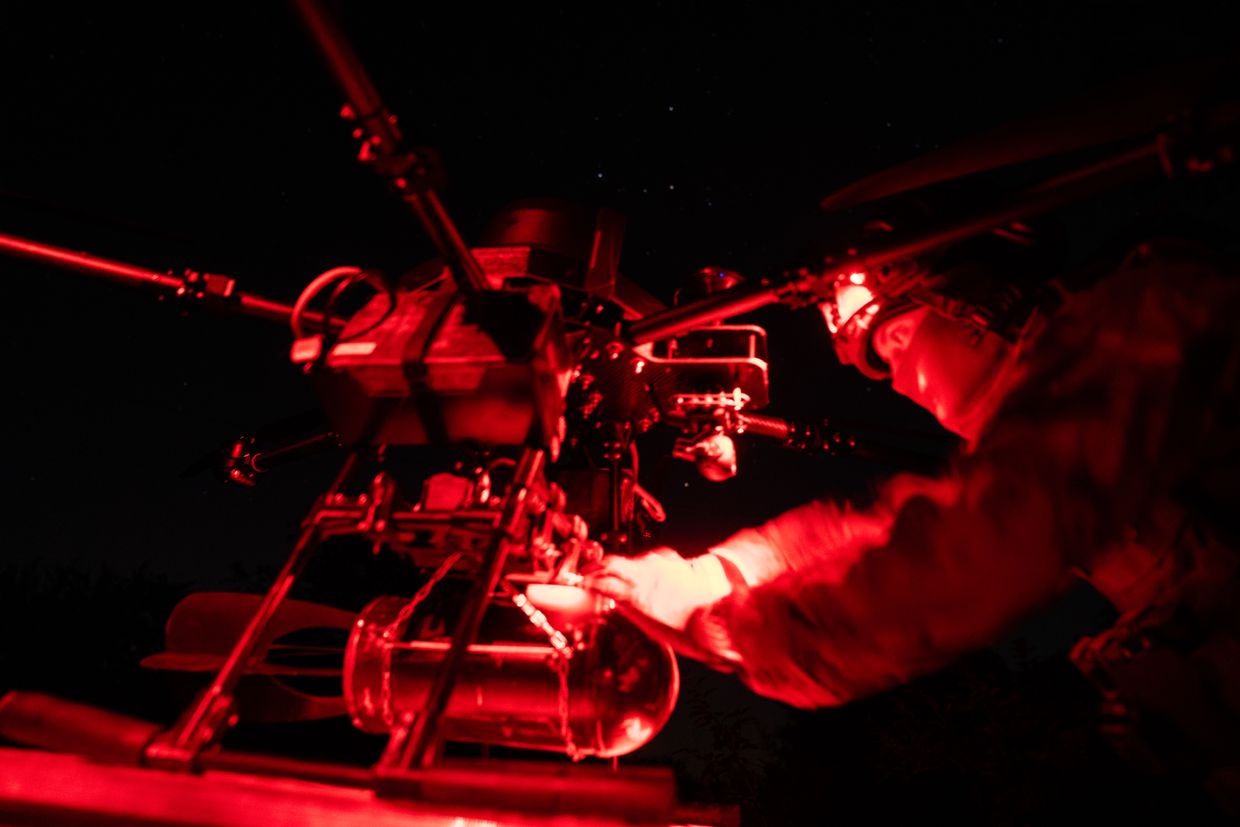
Europe can no longer view Trump’s foreign policy through a binary lens
Trump's imperial nationalism challenges Europe's traditional foreign policy frameworks, forcing a rethinking of transatlantic relations in the face of geopolitical pressure.
U.S. President Donald Trump waits outside the West Wing of the White House in Washington, DC, on Feb. 11, 2025. (Jim Watson / AFP / Getty Images)
Like people in other regions, Europeans face the challenge of discerning what motives underlie U.S. President Donald Trump’s verbal provocations. After all, what Trump really wants is often unclear, which makes it difficult to devise a strategically effective response.
Traditionally, Europeans have interpreted American foreign policy through a binary lens: either a U.S. administration is Atlanticist, in which case all is well (for the most part); or it is isolationist, which spells trouble. But Trump fits neither category.
He is certainly no Atlanticist, because he is convinced that NATO offers insufficient benefits for what it costs the United States, and that Europeans are all free riders. But he is hardly the first American leader to make this criticism. U.S. complaints about European free riding date to at least to the early 1950s, when NATO was just taking shape. The difference between Trump and his predecessors is that he puts a much higher price tag on American protection and views it as something that Europeans do not really deserve.
But nor is Trump an isolationist, though many commentators describe him in these terms. Trump does not think only in crude transactional terms. He believes that America is owed all the perks of hegemony, but with none of the costs. Rather than an isolationist, he is an imperial nationalist, like many nineteenth-century American leaders. Even his preferred policy instruments for ushering in a “golden age,” tariffs and territorial expansion, recall that era.
For Europeans, both seem absurd today. But from an American point of view, they have a historical resonance. America’s war for independence began with a conflict over tariffs, which have since been seen as an instrument of sovereignty. The U.S. is one of the few countries in the world whose constitution explicitly mentions trade. Even if tariffs tend to harm domestic consumers, they serve a political function.
This is reflected in Trump’s proposal to create a new “External Revenue Service” which would centralize tariff administration and serve as a depository for tariff revenues. With such an agency, Trump would have the means to redistribute revenues among states and political clients as he wished. He pursued a similar strategy during his first term when he established a fund within the Department of Agriculture to compensate those harmed by China’s retaliatory measures against American soybean exporters.
But the most important objective, of course, is to use tariffs to exert pressure on partners that are particularly dependent on the U.S. market: Mexico, Canada, and Europe. In the case of Canada and Greenland (an autonomous Danish territory), Trump has also expressed territorial ambitions, wishing to “get Greenland” and make Canada the “51st state.” Commercial pressure is thus a means of achieving territorial expansion, just as it was for the U.S. in the 19th century.
In pining for an American geostrategic fortress stretching from Greenland to Mexico, Trump is unwittingly echoing a U.S. State Department document from the middle of the 19th century which stated that the acquisition of Greenland would “flank British North America for thousands of miles on the north and west, and greatly increase her inducements, peacefully and cheerfully, to become a part of the American Union.”

Europe has understandably been left in a state of shock by Trump’s decidedly non-Atlanticist, non-isolationist geopolitical project. What can be done? Should we simply pray that it will not happen? That, more or less, has been the response from the European Union’s new High Representative for Foreign Affairs and Security Policy, Kaja Kallas. In one of her first public statements, she said little about the threat from America, because she is primarily concerned with just one issue: maintaining transatlantic solidarity to confront Russia in Ukraine. But laudable though this objective may be, it takes two to tango.
Meanwhile, no European official has bothered to mention the EU’s Anti-Coercion Instrument, which permits retaliatory tariffs to be imposed against any state that would use trade restrictions for geopolitical purposes. If Trump decides to intensify his pressure on Denmark through high tariffs, the EU will have no choice but to trigger this mechanism. To do otherwise would be to confirm — and exacerbate — its own geopolitical weakness.
For the same reason, the Danish government is wrong to play the appeasement card. Obviously, the balance of power is not in its favor. But by making no secret of its fear, it is inviting Trump to be even more aggressive.
While it does not make sense for Europe to deploy troops to Greenland — which would either look ridiculous or create the possibility of a war with the U.S. — nor does it make sense to grovel. Whatever happens, Russia is the biggest winner for now. While Europeans hem and haw, no one should be surprised if the White House and the Kremlin negotiate the future of Ukraine behind closed doors.
Editor’s Note: Copyright, Project Syndicate. This article was published by Project Syndicate on Feb. 7, 2025, and has been republished by the Kyiv Independent with permission. The opinions expressed in the op-ed section are those of the authors and do not purport to reflect the views of the Kyiv Independent.










